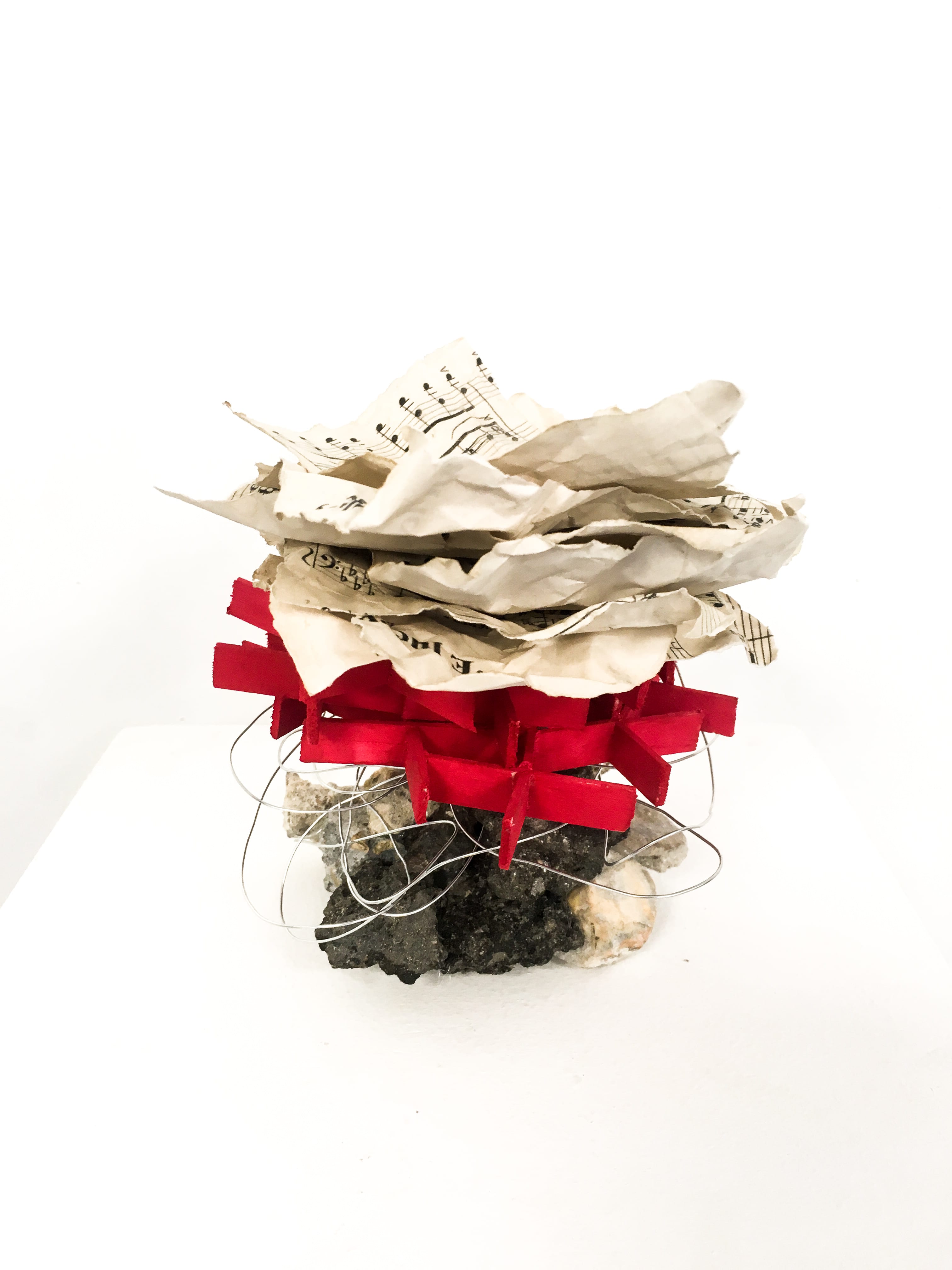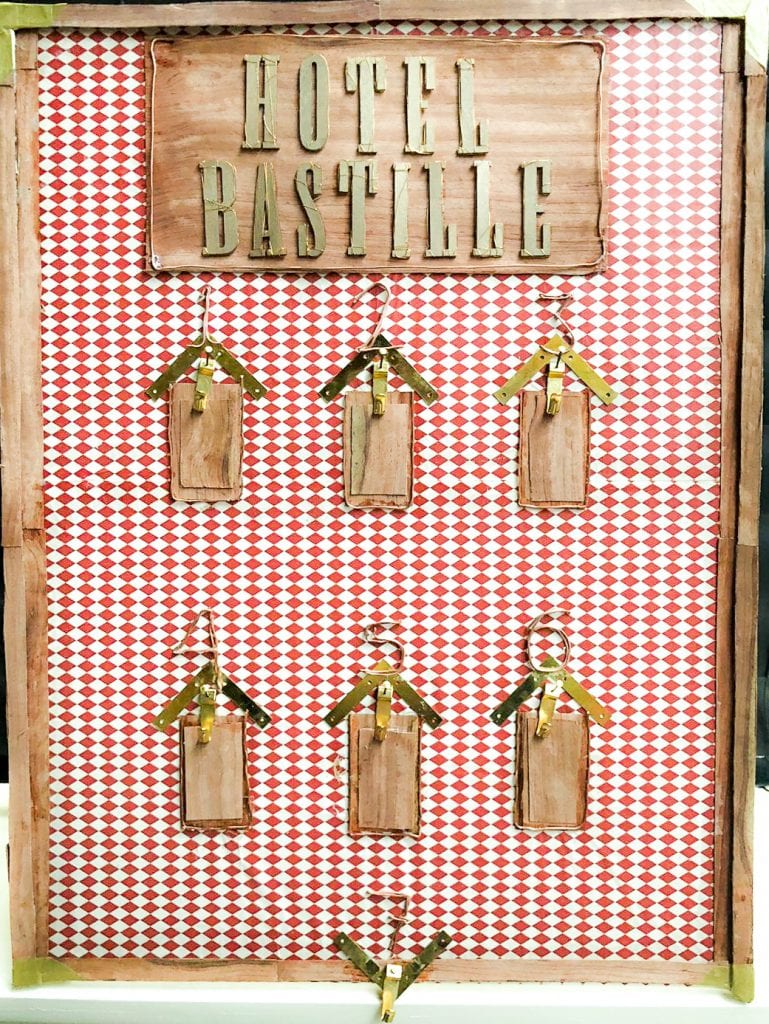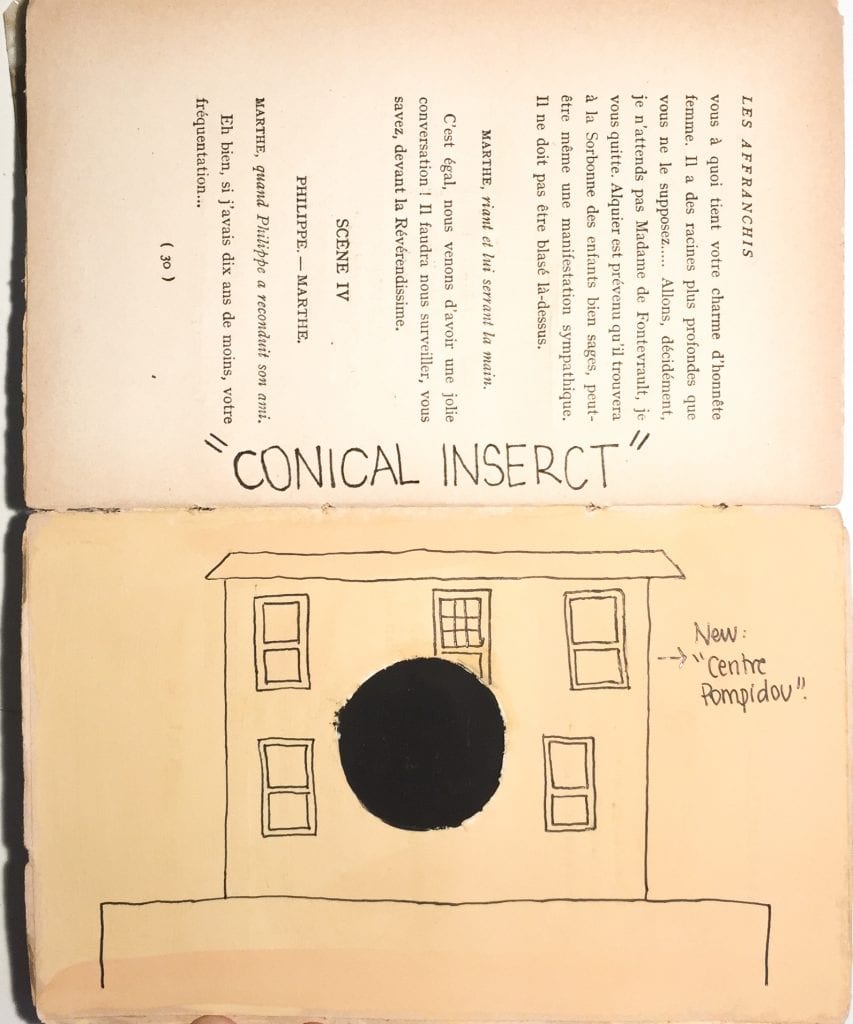INSTALLATION:
PRESENTATION
For our project, we decided upon Bastille because of its history and its significance to both the city of Paris but also the Nation of France. The historical significance of the place led us to a speculation on what the Bastille fort could be in modern days. Our focus was not only on the fort but on the neighborhood that Bastille now is, its value in the city of Paris and its activities. Each one of us dealt with the project in our own way both digitally and manually. Our view of the neighborhood was based on various visits that we made all together and by the research, we conducted on the history, the demographics and the appearance of the place. We wanted to show Bastille as a place of modernity, but with a past, that cannot be forgotten.
To start off with this project we decided to go to the actual place, experience it and gather information. Here, we found ways to document our space through drawings, gathering business cards of all the restaurants and cafés, photos, mapping out lights… We also went there during the day and during the night to understand the contrast between the day to day of people in Bastille (markets, calm life, cafés…) and the nightlife (lights, clubs…)
Our aim for this project was to poetically represent this neighbourhood in Paris, for the viewer to experience a different point of view of the place we chose. Our collective group brings the viewers back to the past, to give them the experience of time. We recreated a hotel that we think would have been appropriate for Bastille since it is a very touristic area. Each one of us focused on various aspects that caught our eye surrounding the changes that Bastille has gone through over a couple hundred years. We want the audience to understand the historical significance but also be able to appreciate the land and what there is now. Using art to portray feelings of emotional connection to the neighbourhood. We each did a little piece of the hotel Sofia did a key holder, Patricia did an artistic sculpture, Quinn did a light guide of all the bars, restaurants and cafés, and Signe did a website that unites all the ideas together.
The viewers of our project are free to interact with the work. The website will be available for one month at this link (http://signehealy.wixsite.com/hotelbastille) . The key holder is meant to be touched and anyone can come and pick up a key and explore the prisoner’s identities. The representative model of the buildings is also able to be held and interacted with in a gentle manner. The lightbox map is meant more for a visual stimulus and is to be viewed and not touched. We created interactive works so the audience can have a more in-depth experience with the history of Bastille as if they are being transported back in time. This is the piece that unites them all together and links the process.
MY PIECE:
Archeologists dig up the ground to find historical artifacts, buildings and stories. I tried to simulate the layers of land that history has put together in Bastille concentrating on the buildings. Also, I did not want to lose the organic look that ground has using very nature-like materials. An artist that I looked into for my project is Vincent Voillat since he works with rocks and nature a lot. I started off with rocks, since, before anything started, there was nothing, only ground and solid rocks. I chose rocks from la Place de Bastille. On top of the rocks we can find metal wire representing the prison and the barbed wire. Probably in the 1700 they did not have barbed wire but it makes the connection between the old and the new. On top of that are red crosses representing the hospital that was built in Bastille after the Nazi invasion of Paris. Finally, opera pieces that have been represented in Bastille pretty recently since the opera was built in the 1980´s. I made them look like old pieces as well to make this connection. It could be interpreted as a vertical timeline of Bastille starting on the bottom and moving our way to the top.
QUINN´S PIECE:
Over the past 230 years, the area of Bastille has changed drastically. From being a vital part in the French Revolution to now one of the city’s top neighbourhoods for food, drinks and even nightlife. I found the juxtaposition involved fascinating and wanted to explore it further. I mapped out out the bars, clubs and restaurants our group saw when we visited Bastille, and represented them as coloured lights with an overlay of an old map of Bastille from 1789 before the storming happened. Something that really struck me while being there was the amount of partying occurring on land with such historical significance. I used colourful lights to shine through, taking over the colours of the map and distracting from the intricate details showing what the area held before. My artistic references are Tatsuo Miyajima, a Japanese artist who works with coloured LED lights with the context of birth, rebirth and death. This connects to my piece as it deals with time, through the death of the Bastille prison, the birth of the social scene in the neighbourhood.
SOFIA´S PIECE:
The idea I had for this project was to work on the population of the neighborhood of Bastille, comparing modern times to the past. I figured it would’ve been too general of a topic, so I decided to narrow it down to seven people of old Bastille, being the seven prisoners of the now destroyed prison of Bastille. My focus was on the imagination of a new version of the prison in modern times. I turned the prison into a modern apartment complex called Hotel Bastille. The French word for Hotel is not quite the same as in English, as the French use this term to simply mean lodging, so it’s not restricted just for hotels. What I made is a key holder for the Hotel and I attached seven keys onto it, symbolizing the fact that the seven prisoners of Bastille had turned into occupants of the apartments in the new structure. I wanted this key holder to be a mixture of past and present, which is why I specifically looked for old keys, some that you wouldn’t find now, and attached new keychains to them to make a contrast. For the research of the materials, I went to the flea market in Saint Ouen and found some antiquities that were perfect for my project. The sign is made by painting the letters or a shimmering light golden color and then winding them with copper thread, in order for them not to have a modern outlook but not even an antique one. To make the numbers, I used a thicker copper wire, since I wanted the outlook to be more artisanal then modern. I nailed the hooks from which the keys are hanging and glued small squares of wood to make the outlook cleaner and to be able to notice when one of the keys are missing. This is an interactive piece, the viewer can remove the keys and put them back, can take a closer look at the keychains, that I’ve placed carefully in order to create seven different personalities. I personally never made a project that required this much craftsmanship. I used new materials that I had never used like wood and copper. My personal research was going to the flea market in Saint Ouen.
SIGNE´S PIECE:
I focused on making something that could unite my group’s individual projects. I struggled with this until I developed my idea to make an actual website for the “Hotel Bastille”. The concept of “Hotel Bastille” is rooted in Sofia’s ideas to make keys for each prisoners and imagine them occupying an apartment complex in the modern era. I took her idea and integrated Patricia and Quinn’s ideas to make one website that details a hotel to represent Bastille and its’ history. I made the website with the help of wix.com and I used photoshop to construct rooms for the hotel and I explain the apartments also available to rent.
this link (http://signehealy.wixsite.com/hotelbastille)
ARTISTIC RESEARCH:
All of the artistic research I did for this project related to how artistic interprete and use space.
Gordon Matta Clark used buildings. He cut holes in them, cut them in half… As well, he did land art. He was very useful to my project since it helped me realize that when looking at a place in Paris, we have to not only look at what is on the outside but also on the inside.
Grimanesa Amaros, is an artist that works very hard to understand space using light installations. All of her lights occupy space. Since Bastille is a place where there are a lot of lights and nightlife, we, as a group, decided that using an artists that uses lights is important and relevant to our project.
For this artistic research we were supposed to research performance art. Since I was going to focus on the buildings in Bastille for my project, I thought that performance architecture, invented my Alex Schweder would be relevant. He is a man that created moving architectures that turn into live performances. He mainly uses wood and plastic.













